-
 Bitcoin
Bitcoin $114500
-0.31% -
 Ethereum
Ethereum $3648
1.11% -
 XRP
XRP $3.033
-0.27% -
 Tether USDt
Tether USDt $0.9999
-0.01% -
 BNB
BNB $758.5
-0.32% -
 Solana
Solana $167.5
1.48% -
 USDC
USDC $0.9998
-0.02% -
 TRON
TRON $0.3331
0.74% -
 Dogecoin
Dogecoin $0.2039
0.25% -
 Cardano
Cardano $0.7419
-0.46% -
 Hyperliquid
Hyperliquid $39.21
2.66% -
 Stellar
Stellar $0.4049
-1.95% -
 Sui
Sui $3.483
-0.56% -
 Bitcoin Cash
Bitcoin Cash $570.8
2.89% -
 Chainlink
Chainlink $16.67
-0.57% -
 Hedera
Hedera $0.2470
-1.57% -
 Ethena USDe
Ethena USDe $1.001
0.00% -
 Avalanche
Avalanche $22.36
1.52% -
 Litecoin
Litecoin $123.4
4.35% -
 UNUS SED LEO
UNUS SED LEO $8.989
0.09% -
 Toncoin
Toncoin $3.324
-2.40% -
 Shiba Inu
Shiba Inu $0.00001219
-1.30% -
 Uniswap
Uniswap $9.811
2.54% -
 Polkadot
Polkadot $3.662
-0.07% -
 Monero
Monero $295.5
-3.85% -
 Dai
Dai $1.000
0.01% -
 Bitget Token
Bitget Token $4.345
0.24% -
 Cronos
Cronos $0.1380
0.95% -
 Pepe
Pepe $0.00001044
-1.14% -
 Ethena
Ethena $0.5981
-4.24%
How to understand market making and liquidity provision in cryptocurrencies?
Market making and liquidity provision are vital for stabilizing crypto markets, reducing volatility, and ensuring efficient trading on exchanges.
Apr 11, 2025 at 10:56 pm
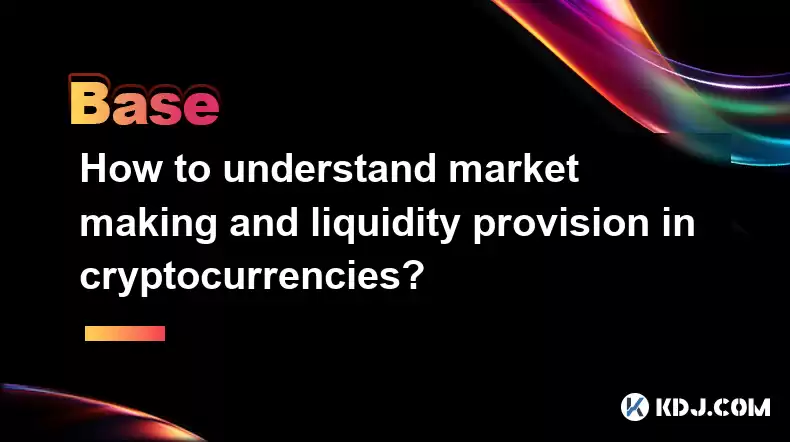
Understanding market making and liquidity provision in cryptocurrencies is crucial for both traders and investors looking to navigate the often volatile crypto markets effectively. Market making and liquidity provision are essential components that help maintain the stability and efficiency of cryptocurrency exchanges. In this article, we will delve into the concepts of market making and liquidity provision, their roles in the cryptocurrency ecosystem, and how they affect trading.
What is Market Making?
Market making is the process by which a market maker provides buy and sell orders to a trading platform, thereby creating a market for a specific asset. Market makers play a vital role in ensuring that there is always a counterparty for traders looking to buy or sell a cryptocurrency. By continuously quoting both a buy and a sell price, market makers help to narrow the bid-ask spread, which is the difference between the highest price a buyer is willing to pay and the lowest price a seller is willing to accept.
Market makers earn revenue through the spread they set between their buying and selling prices. For instance, if a market maker quotes a buy price of $99 and a sell price of $101 for a cryptocurrency, they earn a $2 spread for every transaction they facilitate. This continuous provision of liquidity helps to stabilize the market and reduce volatility, making it easier for other traders to enter and exit positions.
The Role of Liquidity Provision
Liquidity provision is closely related to market making but focuses more broadly on ensuring that there is sufficient trading volume and depth in the market. Liquidity providers, which can include market makers, other traders, and automated market maker (AMM) protocols, contribute to the market by adding their assets to trading pools or by placing limit orders on exchanges.
High liquidity is essential for the smooth functioning of any market. It ensures that large orders can be executed without causing significant price movements, which is particularly important in the cryptocurrency space where prices can be highly volatile. Liquidity providers are incentivized through various mechanisms, such as trading fees, liquidity mining rewards, and other incentives offered by decentralized finance (DeFi) platforms.
Market Making Strategies in Cryptocurrencies
Market makers in the cryptocurrency space employ various strategies to manage their risk and maximize their profits. Some common strategies include:
Passive Market Making: This strategy involves setting buy and sell orders at fixed spreads and letting the market dictate the trading volume. Passive market makers rely on the natural flow of the market to generate profits from the spread.
Active Market Making: In contrast, active market makers adjust their quotes based on market conditions, news, and other factors. They may widen or narrow their spreads to manage risk or take advantage of short-term market movements.
Statistical Arbitrage: Some market makers use statistical models to identify and exploit price discrepancies across different exchanges. By simultaneously buying and selling the same asset on different platforms, they can profit from the price differences.
Algorithmic Market Making: Many market makers use sophisticated algorithms to manage their orders and adjust their strategies in real-time. These algorithms can analyze market data, manage risk, and optimize trading strategies to maximize returns.
The Impact of Market Making and Liquidity on Cryptocurrency Prices
Market making and liquidity provision have a significant impact on cryptocurrency prices. High liquidity typically leads to lower volatility and narrower bid-ask spreads, making it easier for traders to execute trades at favorable prices. Conversely, low liquidity can result in higher volatility and wider spreads, which can make trading more challenging and expensive.
Market makers and liquidity providers help to stabilize prices by providing continuous buy and sell orders. This can help to prevent sudden price spikes or drops, which are common in less liquid markets. Additionally, the presence of market makers can attract more traders to a particular exchange or asset, further increasing liquidity and improving market efficiency.
Decentralized Market Making and Liquidity Provision
In the decentralized finance (DeFi) space, automated market makers (AMMs) have become a popular method for providing liquidity. AMMs use algorithms to set prices and manage liquidity pools, allowing users to trade directly with a smart contract rather than a traditional market maker.
Some popular AMM protocols include:
Uniswap: One of the most widely used AMMs, Uniswap allows users to swap tokens and provide liquidity to earn trading fees.
SushiSwap: Similar to Uniswap, SushiSwap offers additional features such as yield farming and governance tokens.
Curve Finance: Specializing in stablecoin trading, Curve Finance uses an AMM to provide high liquidity and low slippage for stablecoin swaps.
Decentralized market making and liquidity provision offer several advantages, including increased transparency, reduced counterparty risk, and the ability for anyone to participate in providing liquidity. However, they also come with challenges, such as impermanent loss and the need for careful management of liquidity pools.
How to Become a Market Maker or Liquidity Provider
Becoming a market maker or liquidity provider in the cryptocurrency space can be a lucrative opportunity, but it requires careful planning and risk management. Here are some steps to get started:
Choose a Platform: Select a reputable exchange or DeFi platform that supports market making or liquidity provision. Popular choices include Binance, Coinbase Pro, Uniswap, and SushiSwap.
Understand the Requirements: Different platforms have different requirements for market makers and liquidity providers. Research the specific requirements, such as minimum capital, trading volume, and technical capabilities.
Set Up Your Infrastructure: Market making often requires sophisticated trading infrastructure, including high-speed internet, reliable servers, and advanced trading algorithms. Ensure you have the necessary tools and technology to execute your strategy effectively.
Develop Your Strategy: Decide on the market making or liquidity provision strategy that best suits your goals and risk tolerance. Consider factors such as the assets you want to trade, the spreads you will set, and the volume you aim to achieve.
Monitor and Adjust: Continuously monitor market conditions and adjust your strategy as needed. Market making and liquidity provision require ongoing management to maximize returns and minimize risk.
Frequently Asked Questions
Q: How do market makers manage their risk?
A: Market makers manage their risk through various strategies, such as setting appropriate spreads, using hedging techniques, and employing risk management algorithms. They may also diversify their portfolios across different assets and exchanges to spread their risk.
Q: Can anyone become a liquidity provider on DeFi platforms?
A: Yes, anyone can become a liquidity provider on most DeFi platforms. However, it's important to understand the risks, such as impermanent loss, and to carefully manage your liquidity positions to maximize returns.
Q: What is the difference between a market maker and a liquidity provider?
A: While both market makers and liquidity providers contribute to market liquidity, market makers specifically focus on providing continuous buy and sell orders to create a market for an asset. Liquidity providers, on the other hand, add their assets to trading pools or place limit orders to increase overall market liquidity.
Q: How does liquidity affect trading fees on exchanges?
A: Higher liquidity typically leads to lower trading fees on exchanges. Exchanges with high liquidity can offer narrower bid-ask spreads, which reduces the cost of trading for users. Conversely, low liquidity can result in wider spreads and higher trading fees.
Disclaimer:info@kdj.com
The information provided is not trading advice. kdj.com does not assume any responsibility for any investments made based on the information provided in this article. Cryptocurrencies are highly volatile and it is highly recommended that you invest with caution after thorough research!
If you believe that the content used on this website infringes your copyright, please contact us immediately (info@kdj.com) and we will delete it promptly.
- Uniswap Valuation Under the Microscope: Bitwise CIO's Perspective
- 2025-08-05 23:10:12
- Coinbase's $2 Billion Convertible Notes: A Bold Move or Risky Bet?
- 2025-08-05 23:10:12
- Inveniam, MANTRA, and Real-World Assets: Forging a New DeFi Frontier
- 2025-08-05 22:30:12
- Cyprus Investor's $448K Crypto Loss: An Email Hack Wake-Up Call for Crypto Exchanges
- 2025-08-05 22:30:12
- Solana Memecoin Mania: Trader Profit Secrets Revealed!
- 2025-08-05 20:30:13
- POL Price Rebound: Will Consolidation Lead to a Breakout?
- 2025-08-05 20:30:13
Related knowledge
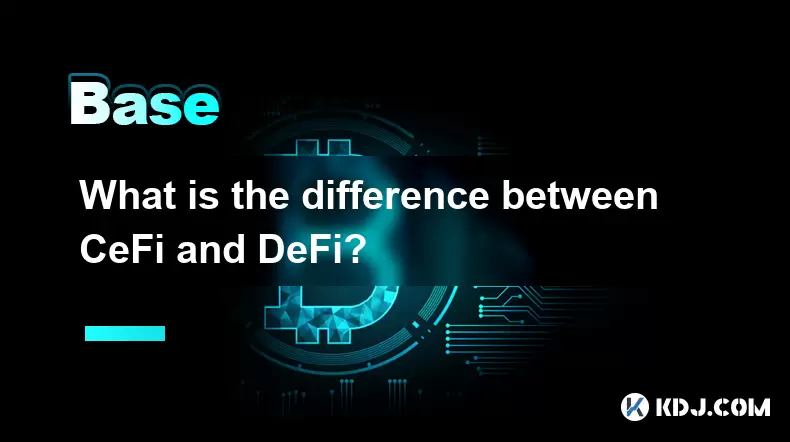
What is the difference between CeFi and DeFi?
Jul 22,2025 at 12:28am
Understanding CeFi and DeFiIn the world of cryptocurrency, CeFi (Centralized Finance) and DeFi (Decentralized Finance) represent two distinct financia...

How to qualify for potential crypto airdrops?
Jul 23,2025 at 06:49am
Understanding What Crypto Airdrops AreCrypto airdrops refer to the distribution of free tokens or coins to a large number of wallet addresses, often u...
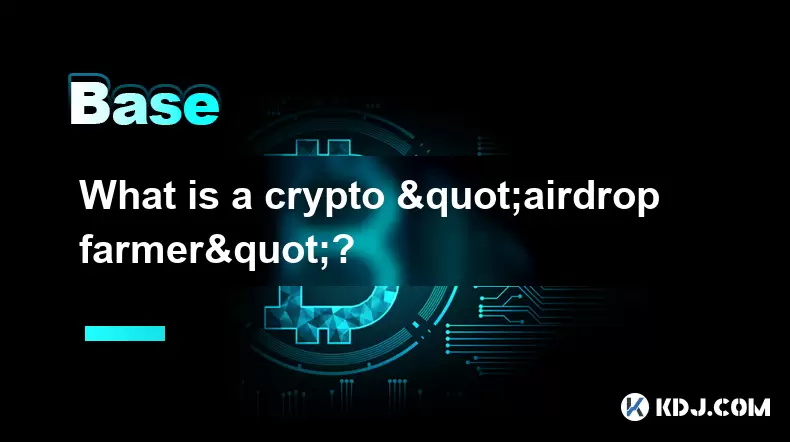
What is a crypto "airdrop farmer"?
Jul 24,2025 at 10:22pm
Understanding the Role of a Crypto 'Airdrop Farmer'A crypto 'airdrop farmer' refers to an individual who actively participates in cryptocurrency airdr...
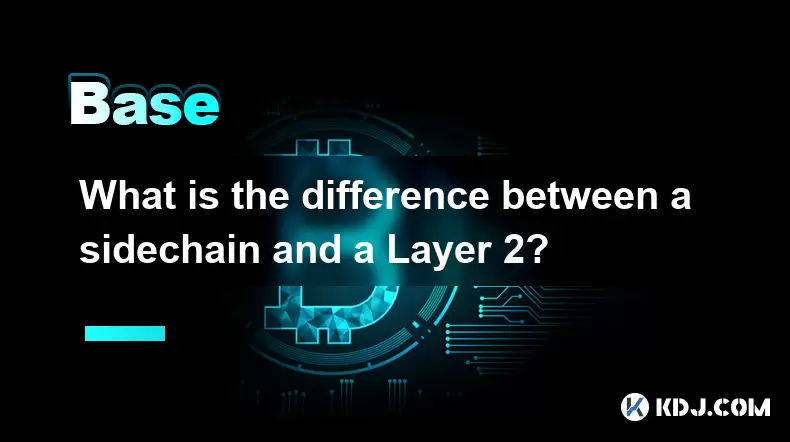
What is the difference between a sidechain and a Layer 2?
Jul 20,2025 at 11:35pm
Understanding the Concept of SidechainsA sidechain is a separate blockchain that runs parallel to the main blockchain, typically the mainnet of a cryp...

What is the Inter-Blockchain Communication Protocol (IBC)?
Jul 19,2025 at 10:43am
Understanding the Inter-Blockchain Communication Protocol (IBC)The Inter-Blockchain Communication Protocol (IBC) is a cross-chain communication protoc...
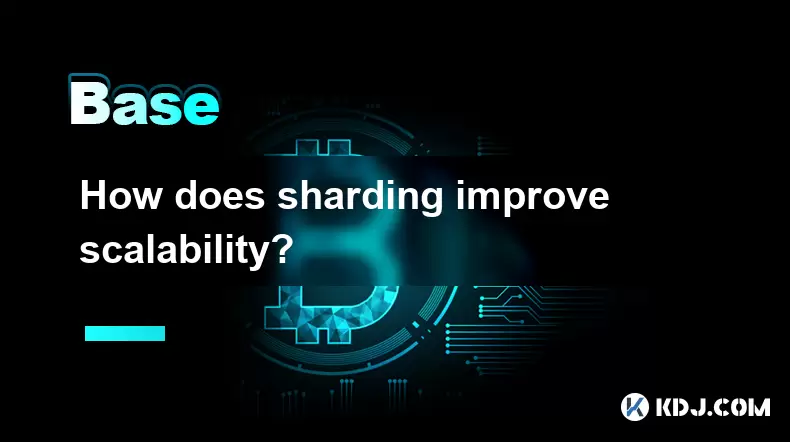
How does sharding improve scalability?
Jul 20,2025 at 01:21am
Understanding Sharding in BlockchainSharding is a database partitioning technique that is increasingly being adopted in blockchain technology to enhan...

What is the difference between CeFi and DeFi?
Jul 22,2025 at 12:28am
Understanding CeFi and DeFiIn the world of cryptocurrency, CeFi (Centralized Finance) and DeFi (Decentralized Finance) represent two distinct financia...

How to qualify for potential crypto airdrops?
Jul 23,2025 at 06:49am
Understanding What Crypto Airdrops AreCrypto airdrops refer to the distribution of free tokens or coins to a large number of wallet addresses, often u...

What is a crypto "airdrop farmer"?
Jul 24,2025 at 10:22pm
Understanding the Role of a Crypto 'Airdrop Farmer'A crypto 'airdrop farmer' refers to an individual who actively participates in cryptocurrency airdr...

What is the difference between a sidechain and a Layer 2?
Jul 20,2025 at 11:35pm
Understanding the Concept of SidechainsA sidechain is a separate blockchain that runs parallel to the main blockchain, typically the mainnet of a cryp...

What is the Inter-Blockchain Communication Protocol (IBC)?
Jul 19,2025 at 10:43am
Understanding the Inter-Blockchain Communication Protocol (IBC)The Inter-Blockchain Communication Protocol (IBC) is a cross-chain communication protoc...

How does sharding improve scalability?
Jul 20,2025 at 01:21am
Understanding Sharding in BlockchainSharding is a database partitioning technique that is increasingly being adopted in blockchain technology to enhan...
See all articles

























































































